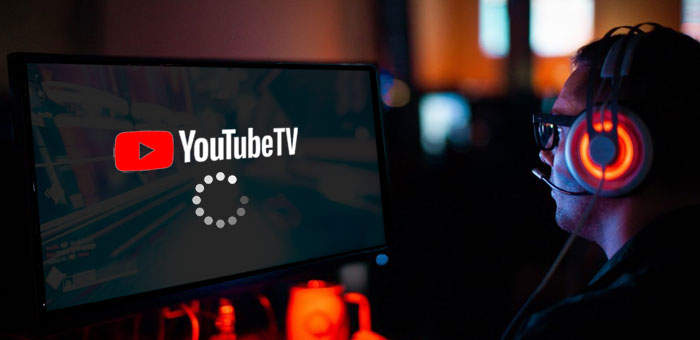
Fix YouTube Tv Buffering Issue
Buffering can be one of the most frustrating experiences while streaming your favorite content on YouTube TV. If YouTube TV keeps buffering, you’re not alone! Many users face this issue due to a variety of factors, including slow internet speed, outdated devices, or network congestion. This guide provides detailed steps to fix YouTube TV buffering issues and improve your streaming experience.
Table of Contents
ToggleWhy Does YouTube TV Buffer?
It can also buffer when a video stream is not able to load fast enough to support smooth playback of the video. Following are some of the general reasons that cause buffering for YouTube on TV:
- Unstable or slow internet connection: It takes longer to transmit data, hence causing buffering.
- Network Congestion: This happens when there are several devices streaming, or during peak hours; this might overload your network.
- Outdated Devices or Apps: Older devices or outdated apps may struggle to handle video playback efficiently.
- YouTube Server Issues: Although rare, problems with YouTube TV servers can lead to buffering issues.
Let’s explore how to resolve these problems effectively.
How to Fix YouTube TV Buffering Issues
-
If YouTube TV buffering issues are interrupting your experience, follow these steps:
1. Restart Your Device
Restarting your device is a simple yet effective way to resolve temporary glitches.
- Press and hold the power button until your device is turned off.
- Wait for 30 seconds and turn it on again.
- Open the YouTube TV app to see if the problem persists.
2. Close and Reopen the YouTube TV App
Refreshing the app may clear temporary errors or bugs.
- Close the app completely.
- Reopen it and try playing your video again.
3. Check for Updates
Outdated software can cause various compatibility and performance issues.
- Ensure your device has the latest system updates installed.
- Update the YouTube TV app to the most recent version.
- After updating, restart your device for the changes to take effect.
4. Uninstall and Reinstall the YouTube TV App
If the above steps don’t work:
- Uninstall the YouTube TV app from your device.
- Reinstall it from your respective app store.
- Log in again and see if the issue improves.
5. Optimize Your Internet Connection
Streaming, sans buffering, of course requires a stable internet connection.
Run a Speed Test: Check out any online speed test website and find out how your connection does.
Speed Recommendations for YouTube TV:
- Less than 3 Mbps: Videos may load slowly or buffer often.
- 3 Mbps+: This is sufficient for standard-definition video.
- 7 Mbps+: Great for streaming one HD video.
- 13 Mbps+: Perfect for streaming multiple HD videos simultaneously.
Pro Tips for Better Internet:
- Try to switch your device from Wi-Fi to a wired connection for stability in the connection.
- Move your device closer to the router to get a better signal.
- Disconnect devices from the network to free up bandwidth.
6. Lower Video Quality
If your internet speed keeps on fluctuating, try reducing the resolution of the video.
- Tap the video settings icon and select a lower quality, such as 720p or 480p.
- Lower resolution requires less bandwidth and can minimize buffering.
7. Verify Location Permissions
Make sure the YouTube TV will have access to your location and stream content.
- Open settings in the YouTube TV app.
- Click on “Location Permissions” and update your home area if it isn’t.
Follow our guide at Change Home Location YouTube TV.
Advanced Troubleshooting Techniques
If it still buffers after the above tricks, then more advanced troubleshooting techniques can be tried:
Restarting Your Router:
- Switch off the router and pull the plug off for at least 60 seconds.
- Plug it back in, power on, and reconnect your device.
Use a Reliable Device:
- Older streaming devices might have issues while playing HD. Consider getting a newer one.
Check YouTube TV Server Status:
- Sometimes, YouTube TV’s side might have issues. Check “Downdetector” or other sites to see if anyone else has similar problems.
Conclusion
Buffering issues related to YouTube TV are definitely a nuisance. However, if the right technique is employed to fix this issue, then the problem could get resolved quickly. Be it optimization of the internet, updating of devices, or changes in video settings-all of these can resolve YouTube TV buffering problems and let users enjoy non-stop streaming.
If these issues persist, then don’t hesitate to reach out to YouTube TV Support for expert assistance.
Also Read:
FAQ's
Buffering in YouTube TV may happen because of low internet speed, network congestion, or device-related issues. It can be resolved by having a stable internet connection and optimizing device settings.
The most common causes include:
- Unstable internet connection.
- Several devices stream simultaneously.
- Outdated apps or devices.
To resolve the issue, do the following:
- Check your internet connection speed.
- Restart your device and the app.
- Lower video quality settings.
- Update your app and device.
You can’t completely avoid buffering, but you can reduce it by doing the following:
- Using a fast internet connection.
- Optimizing device settings.
- Reducing bandwidth usage over your network.
If you’ve tried all the above steps and buffering still occurs, reach out to YouTube TV Support at (800) 868-0714 for further assistance.